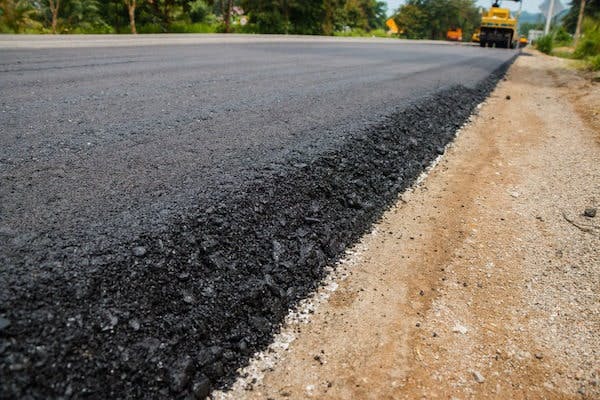Hot Mix Asphalt Paving: Elevating Commercial Parking Lot Criteria
Hot Mix Asphalt Paving: Elevating Commercial Parking Lot Criteria
Blog Article
Opening the Keys of Warm Mix Asphalt Innovation
Checking out the depths of warm mix asphalt innovation uncovers a globe where precise processes and precise formulations converge to shape our roads and infrastructure. The blend of fillers, aggregates, and binders isn't merely a construction task yet a tactical orchestration of resilience and efficiency. As we peer into the intricate dance of parts, a tapestry of strength and sustainability unfolds. What lies under this surface area of asphaltic proficiency, and what secrets wait to be revealed in the realm of paving advancements?
Significance of Hot Mix Asphalt
Hot Mix Asphalt plays an essential duty in modern-day facilities advancement as a result of its resilience and cost-effectiveness. As the most typically made use of leading material for roads, highways, and vehicle parking whole lots, Warm Mix Asphalt supplies an array of advantages that add to its value in construction tasks. One key advantage is its capacity to withstand rush hour loads and severe climate condition, offering a long-lasting and reliable surface area for transport networks. In Addition, Hot Mix Asphalt is cost-efficient in both initial building and long-lasting upkeep, making it a recommended selection for numerous infrastructure projects.
The sturdiness of Hot Mix Asphalt stems from its structure, that includes aggregates, binder, and filler materials that are carefully chosen and blended to meet specific efficiency demands. This specific combination causes a adaptable and solid sidewalk that can endure regular usage without considerable damage. Hot Mix Asphalt is 100% recyclable, more boosting its sustainability and environmental advantages. Overall, the value of Warm Mix Asphalt in framework development can not be downplayed, as it remains to be a cornerstone of contemporary building and construction techniques.
Components of Asphalt Mixes
The make-up of asphalt blends is composed of meticulously selected accumulations, binder, and filler materials that are important for achieving details performance requirements. Accumulations are the key part of asphalt blends, providing toughness and security. The binder, typically bitumen or asphalt cement, holds the aggregates with each other and provides versatility and longevity to the mix.
The combination and proportion of these parts play a considerable role in determining the quality and efficiency of the asphalt mix. Engineers meticulously create the mix to meet certain needs, considering variables like website traffic volume, environment problems, and pavement lifespan. Proper choice and balancing of aggregates, binder, and fillers are essential for creating long lasting, durable asphalt pavements.
Combining and Manufacturing Strategies

When the accumulations are picked, the binder, often asphalt concrete, is contributed to bind the materials with each other. The binder's top quality and quantity dramatically impact the mix's strength, resistance, and adaptability to ecological variables. Furthermore, fillers like hydrated lime or Rose city concrete may be included to boost specific features of the asphalt mix, such as its workability or moisture resistance.
Throughout production, the accumulations and binder are heated, typically between 250-325 ° F(121-163 ° C ), to assist in mixing and ensure appropriate coating of the aggregates. The mixing process should be extensive to accomplish a homogeneous mixture that advertises the wanted efficiency features have a peek at this site of the asphalt. Different methods, such as batch blending or drum blending, are utilized to accomplish top quality and consistent asphalt blends for construction tasks.
Elements Affecting Asphalt Efficiency
Factors affecting asphalt efficiency include a variety of variables that influence the longevity, long life, and overall top quality of asphalt sidewalks. One essential aspect is the quality of materials used in the asphalt mix.

Environmental problems likewise influence asphalt efficiency. Temperature variations, dampness infiltration, and traffic lots can all affect the architectural stability of the sidewalk. Style considerations, such as pavement density and drain, are crucial in making sure the long-term performance of the asphalt sidewalk. By very carefully considering these service providers, designers and elements can optimize asphalt performance and enhance the life span of sidewalks.
Lasting Practices in Asphalt Innovation

Furthermore, the development of warm-mix asphalt (WMA) innovations has acquired grip in the last few years. WMA permits for the manufacturing and placement of asphalt blends at lower temperatures contrasted to traditional hot-mix asphalt, resulting in lowered energy usage and greenhouse gas emissions. Furthermore, making use of porous asphalt mixes can assist mitigate stormwater overflow issues by permitting water to infiltrate with the sidewalk and into the ground, advertising all-natural water check these guys out filtration and recharge processes. By applying these sustainable methods, the asphalt sector can add to developing a much more durable and ecologically pleasant infrastructure network.
Conclusion
To conclude, hot mix asphalt technology plays a vital duty in modern-day facilities advancement due to its longevity and cost-effectiveness. By carefully balancing components, utilizing appropriate mixing techniques, and considering numerous aspects, engineers can develop top notch asphalt mixes that endure rush hour lots and extreme climate condition. Welcoming sustainable practices, such as utilizing recycled materials and warm-mix modern technologies, further improves the ecological kindness of asphalt technology.
Blending and production strategies in hot mix asphalt modern technology entail the accurate mix and handling of aggregates, binder, and fillers to create a high-performance and durable asphalt mix.Elements affecting asphalt performance incorporate an array of variables that affect the durability, durability, and general high quality of asphalt sidewalks. Lasting methods in asphalt technology incorporate different initiatives intended at decreasing the ecological influence of asphalt manufacturing and paving procedures. By integrating redeemed asphalt pavement (RAP) and recycled asphalt tiles (RAS) right into brand-new asphalt blends, the market can significantly lower the usage of raw materials and energy, while likewise decreasing garbage dump waste.
WMA enables for the manufacturing and placement of asphalt mixes at lower temperature levels contrasted to traditional hot-mix asphalt, resulting in minimized power usage and greenhouse gas exhausts.
Report this page